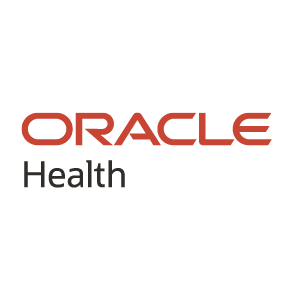The healthcare system continues to push care to ambulatory settings to increase access and reduce costs. The pandemic further accelerated this move, expanding access to services through telehealth and virtual care offerings. While this shift in healthcare delivery from inpatient to outpatient settings should prove a welcome opportunity for independent practices, it also presents clinical, financial and operational challenges for these providers to address in order to remain independent, meet increasing and evolving demands for care, and support clinical staff.
“As large health systems expand, they often absorb local providers to achieve economies of scale, which can leave independent providers feeling like cogs in a wheel, with diminished control over their practice and an emphasis on meeting quotas rather than providing quality care, The main concern for these providers is how to stay competitive and maintain their autonomy in a landscape increasingly dominated by much larger competition,” says Sarah Matt, MD, MBA, vice president, physician and healthcare technology executive at Oracle Health.
To buck a negative trend that has seen the share of independent physicians decrease to less than 50% of all physicians in the U.S., smaller independent practices should consider the opportunities offered by cloud technology to enable them to operate as efficiently as larger groups.
“Some believe that small practices cannot afford or support new technology. However, adopting new technology is crucial for these practices to stay competitive and avoid being left in the cold,” Matt warns.
“Cloud technology can offer significant cost savings for small practices by bundling essential services like documentation and customer engagement into all-in-one solutions,” she continues. “These out-of-the-box offerings eliminate the need for a dedicated IT staff, as support can be provided externally, helping to reduce pressure on practices that often rely on smaller, sometimes family-run teams.”
While the initial cost of adopting cloud technology can be a concern, the long-term benefits can include significant savings on IT infrastructure and decreased maintenance costs. Cloud solutions allow practices to pay only for the resources they use, which can be scaled up or down as needed. However, the benefits of the cloud extend well beyond cost and maintenance.
“From a marketing standpoint, patients are increasingly seeking healthcare providers that offer advanced, modern services,” Matt emphasizes. “If a practice still relies on outdated methods like pen and paper, it is unlikely to meet patient expectations. Patients now anticipate a healthcare experience that is digitally connected and integrated with other healthcare facilities, as they often visit multiple healthcare providers.”
Cloud technologies provide the scalability and flexibility small practices need to adapt quickly to changing healthcare demands while supporting privacy and security capabilities.
“Smaller practices often struggle with technology due to the need to manage on-premise infrastructure, which requires dedicated staff to maintain servers, manage access and update software,” Matt observes. “By adopting cloud services, these practices can leverage the expertise and resources of large organizations with experience across highly regulated industries, enhancing efficiency and cybersecurity. This shift reduces the need for in-house IT personnel and can provide robust, scalable solutions that supports continuous updates and protection against cyber threats.”
Additionally, the ability to automate administrative tasks (e.g., billing, patient records management scheduling) helps reduce the workload on staff and minimizes human error. Ultimately, cloud technology enables data to drive clinical decision-making and tap into advantage analytics powered by machine learning and artificial intelligence to reveal actionable steps practices can take to coordinate care, streamline workflows and help improve patient outcomes.
“Providers and their business partners need to carefully consider the experience they aim to offer and identify the core values and goals of their practice,” Matt recommends. “While technology plays a significant role, the human element is a hallmark of independent practice. The tools and methods we choose must align with our goals to manage patient volumes effectively while still delivering exceptional care. The cloud is crucial to scaling the practice to support financial viability and the delivery of high-quality care.
Physician practices will need to improve their efficiency without sacrificing quality to maintain their independence in the future. According to Matt, future innovation will revolve around the experiences of providers and patients.
With workforce shortages already affecting care access and shortages expected to increase significantly over the next decade, modern technology can improve the productivity and satisfaction of clinical staff and extend to the patient population.
“Provider retirements have surged post-COVID, posing challenges in retention,” notes Matt. “To keep them, simplifying their workload is essential. Patient retention hinges on their experience because they value feeling listened to and wait times over quality of care. Innovative technology can significantly enhance the healthcare provider experience by streamlining patient interactions and improving efficiency.”
As primary care takes on a leading role in value-based initiatives to promote preventative services and chronic disease management, it will benefit the ability to access and share data across the care continuum.
“Data sharing and interoperability are crucial in healthcare, particularly for patients with chronic conditions who may consult multiple doctors over several years,” says Matt. “Ensuring that data is digitized and compatible with various health IT systems helps avoid redundancy and makes patient information available for clinical decision-making. This setup enables primary care practices to act as a central hub, streamlining patient information management and avoiding administrative burden.”
Embracing cloud technology marks a key step in an independent practice’s ability to remain in operation, offering significant advantages such as cost savings, increased efficiency, and the ability to meet modern patient expectations. Powered by modern infrastructure, practices can improve their daily operations through automation and provide high-quality care in an increasingly digital healthcare environment, all while positioning them to adapt quickly to future healthcare demands.

